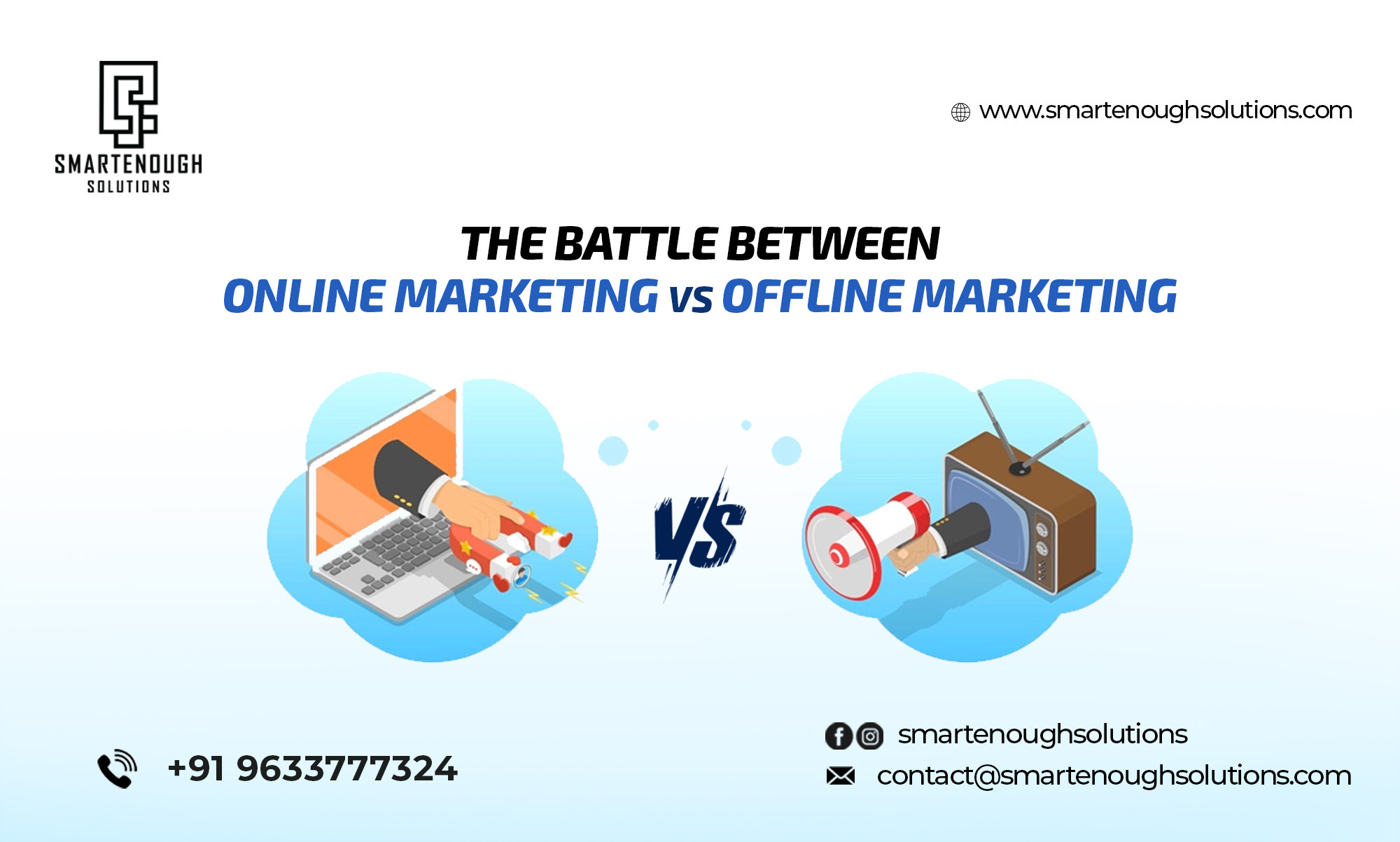
The battle between Online Marketing Vs. Offline Marketing
The battle between Online Marketing Vs. Offline Marketing
Introduction
In the realm of marketing, two giants stand tall, each wielding its unique strengths and strategies – Online Marketing and Offline Marketing. As businesses navigate the ever-evolving landscape to capture audience attention and drive sales, the battle between these two approaches continues to intensify. Let’s delve into the showdown between Online Marketing and Offline Marketing, examining their distinct characteristics, advantages, and the evolving dynamics in the modern business arena.
Offline Marketing: The Traditional Powerhouse
Offline Marketing, also known as traditional marketing, encompasses strategies executed outside the digital sphere. From print advertisements, television commercials, radio spots, billboards, and direct mail, to events and networking, offline marketing has long been the cornerstone of marketing initiatives.
Strengths of Offline Marketing
Tangible Presence: Physical advertisements, such as billboards or brochures, offer a tangible presence that can leave a lasting impact on audiences.
Local Targeting: Offline strategies allow for precise local targeting, crucial for businesses catering to specific geographic areas.
Personal Interaction: Events, trade shows, and in-person marketing foster personal interactions, enabling businesses to establish direct connections with potential customers.
Online Marketing: The Digital Revolution
Contrasting the traditional approach, Online Marketing harnesses the power of the internet and digital platforms to reach and engage audiences. Social media marketing, content marketing, email campaigns, SEO (Search Engine Optimization), PPC (Pay-Per-Click) advertising, and influencer partnerships constitute the core of online marketing strategies.
Strengths of Online Marketing
Global Reach: Online marketing transcends geographical boundaries, offering access to a global audience, ideal for businesses aiming for widespread visibility.
Targeted Advertising: Advanced analytics and targeting options enable precise audience segmentation, ensuring content reaches the right demographics.
Real-Time Interaction and Analytics: Digital platforms facilitate real-time engagement with audiences, allowing immediate feedback and access to comprehensive analytics for campaign evaluation and optimization.
Conclusion
The battle between Online and Offline Marketing isn’t a clash of rivals but a convergence of strengths. It’s about harnessing the power of traditional roots while embracing the opportunities presented by the digital age. The future of marketing doesn’t lie in choosing sides but in weaving a seamless narrative that integrates both worlds, creating a symphony of marketing strategies that resonate with audiences in an ever-evolving landscape.

